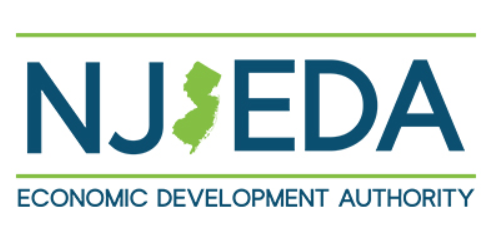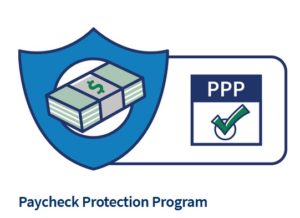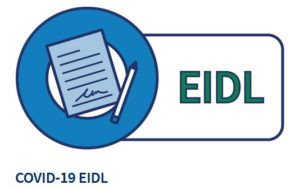Child Care Center Business Support
In response to COVID-19, Congress passed several bills in 2020 to provide business relief. Congress sent additional funding to states specifically for child care (e.g., to help with the costs of PPE and cleaning supplies, and to provide grants for temporary stabilization support).
Congress also created new forms of relief for businesses, particularly small businesses such as child care. This funding is available in grants, loans, and tax credits. This page provides information for child care centers about options to consider as child care center-based businesses face the economic impact of COVID-19. A similar page of business relief options for family child care homes is located here.
U.S. Small Business Administration (SBA) Business Relief Options for Child Care Centers
In response to the COVID-19 public health pandemic, Congress passed several bills in 2020 to provide business relief, particularly for small business owners such as child care centers and family child care home providers.
9/13/21 Update
The SBA Paycheck Protection Program (PPP) expired on May 31, 2021. However, loan applications were processed through June. At this point, providers that received a PPP loan need to apply for forgiveness (which is what turns the “forgivable loan” into a grant). Providers can apply for forgiveness as soon as all the loan funds are spent. This means that PPP applications submitted on or before May 31 will continue to be processed in June. However, no new applications will be accepted unless Congress extends the program. Borrowers need to apply for forgiveness within 10 months of spending the money (in order to qualify for forgiveness).
The SBA Paycheck Protection Program (PPP) Online Forgiveness Portal
In August 2021, the SBA opened a new online PPP loan forgiveness portal for loans of $150,000 or less. This means that businesses that received a PPP loan can apply online through the SBA instead of going through their lender that approved the loan.
The SBA created the new online forgiveness portal to help expedite forgiveness approval, which turns the loan into a grant (i.e., borrowers will not have to repay it). The new online portal is designed to speed up the approval of forgiveness for small loans ($150,000 or less).
How the SBA Online Forgiveness Portal Works
The online portal requires borrowers to submit the same information that they otherwise would have filled out on a bank form. It can be faster for borrowers to receive forgiveness because they won’t have to depend on their bank queue of review for approval, which could include both large and small loans. Because the online portal is designed only for small loans, the process could be faster.
In order to use the SBA online portal, your bank must opt-in (which is a bank process partnering with the SBA). More than 1,200 banks have opted in as of August 20. Check here to see if your bank has opted in. Because the portal is new, it is expected that many more banks will be opting in over the next few weeks.
Be prepared! Review the form below of required information (the same information is required through the online portal as would be required through a bank form).
SBA Form 3508S. This form is for borrowers of $150,000 or less. It’s a short one page form. No calculations are required. Borrowers do not need to submit documentation. However, the SBA requires retaining all records for Form 3508S for four years (in case borrowers are subject to a random audit).
SBA Online Forgiveness Portal Tips! When you first visit the online portal, you will be required to set up an account (with your email) and create a password. Write down the password to save it! You will receive an email to verify that you want to create an account. It’s quick, just click on the link and confirm. Once your account is set up (which is really fast), you will need to have this information ready to submit through the portal:
- EIN, SSN, or ITIN
- SBA Loan #
- Gross Receipts 2019
- Gross Receipts 2020
- # of employees at time of application (remember: if you are a family child care provider, you need to count yourself as an employee)
- # at time of forgiveness
- Amount of PPP spent on payroll
SBA Portal User Guide! The portal is really simple. However, reading through the user guide can make the portal submission process much faster and may help answer any questions you have. If you do have questions, the SBA has set up a hotline where a team of SBA staff are ready to answer any question! If you have two PPP loans (a first draw loan and a second draw loan, you must apply for forgiveness for each loan separately).
SBA Hotline: 877-552-2692
Brief Background About PPP loans. Congress created the PPP “forgivable loan” (in other words, a grant) for small businesses in March of 2020. Congress has extended PPP several times. In December 2020, Congress separated PPP into two programs.
- First Draw PPP forgivable loans are for businesses that did not receive a PPP forgivable loan in 2020.
- Second Draw PPP forgivable loans are for businesses that received a PPP forgivable loan, but still have additional need for financial support. The Second Draw PPP loans are restricted to businesses with 300 or fewer employees and must be able to show at least a 25% reduction in revenue between comparable quarters in 2019 and 2020.
As long as borrowers use the funds for eligible expenses, borrowers can apply for “forgiveness”, which is what turns the loan into a grant that does not need to be repaid. Borrowers need to apply for forgiveness within 10 months of spending the money.
Overview of Eligible Expenses for Forgiveness
In general, in order for forgiveness to be approved, at least 60% of the funds must be used for payroll related costs. This means up to 40% of the loan can be used for fixed costs such as mortgage interest, rent, utilities, software used for your business (e.g., for record-keeping or supporting other business operations), perishable goods (such as food costs), expenses for PPE, cleaning supplies, and other expenses related to social distancing and public health requirements related to COVID. For family child care providers, you are eligible for a PPP forgivable loan whether or not you have employees. (For example, for purposes of the PPP loan, an FCC provider is considered an employee). This means when completing the SBA form, the FCC provider is considered 1 employee. (e.g., In response to: Employees at Time of Loan Application, insert 1. In response to Employees at Time of Forgiveness Application, insert 1).
Allowable Expenses for Non-payroll Uses of PPP Funds. Four additional categories of eligible expenses for fixed costs were added through legislation enacted in December.
- Covered Operations Expenditures. Costs related to business software or cloud computing services that support business operations, billing, accounting, or record-keeping. For example, for child care programs, this means the cost of child care management system software that supports business operations or other business support.
- Covered Property Damage. Property damage due to public disturbances that occurred during 2020 that are not covered by insurance.
- Covered Supplier Costs. Expenses pursuant to a contract, order, or purchase order with respect to perishable goods and other items. For example, for child care programs, this means the purchase of food served to children.
- Covered Worker Protection Equipment. Expenses that support business activities to comply with COVID requirements established by the U.S. Department of Health and Human Services, Centers for Disease Control, Occupational Safety and Health Administration, or any equivalent requirements or guidance by a state or local government during the pandemic. For example, for child care programs, this means expenses for PPE, cleaning supplies, sneeze guards, portable water stations, and other expenses related to social distancing and public health requirements related to COVID.
Note: Although expenses related to fixed costs were expanded in legislation enacted by Congress in December, the requirement for at least 60% of PPP loans to be used for payroll related purposes remains in place. Payroll expenses include cash compensation, employer contributions for group health, life, disability, vision or dental insurance and employer contributions to employee retirement plans (exception: benefits for the self-employed (e.g., family child care providers) are not included because the SBA considers such payments already included in compensation).
Each of the SBA Forms that correspond to PPP loans is accompanied by detailed instructions: 4 pages of instructions to explain SBA Form 3508S, 5 pages of instructions to explain SBA Form 3508EZ, and 8 pages of instructions to explain SBA Form 3508. You can disregard the forms if you have a loan under $150,000 and choose to use the new SBA online forgiveness portal. Check to see if your lender opted in, and then give the online portal a try!
For help in completing SBA forms, ask your lender or reach out to your local Small Business Development Center (SBDC) or, call the SBA Hotline: 877-552-2692 for help with the portal.
COVID-19 Economic Injury Disaster Loans. The U.S. Small Business Administration offers low interest loans to small businesses, including child care centers. Unlike the PPP program, the Economic Injury Disaster Loans (referred to as EIDL) are not forgivable. The interest rate for tax-paying (for-profit) child care centers is 3.75%. The interest rate for nonprofit child care centers is 2.75%. Payments are deferred for one year (although interest accrues). The loan is for 30 years, but can be paid back sooner if the borrower chooses to do so.
Targeted EIDL Advance funds of up to $10,000 (which are grants, not loans) are available to businesses located in low-income communities that previously received an EIDL Advance for less than $10,000, or those that applied but received no funds due to lack of available program funding. Applicants may qualify if they:
- Are located in a low-income community. The definition of a “low-income community” is defined here or you can use the SBA mapping tool to check to see if your zip code is located in a low-income community.
- Have more than a 30% reduction in revenue during an 8-week period beginning on March 2, 2020, or later. Providers will be asked to provide gross monthly revenue (all forms of combined monthly earnings received) to confirm the 30% reduction.
Applicants do not need to take any action at this time. The SBA will reach out to those who qualify.
U.S. Internal Revenue Service (IRS) Business Relief Options for Child Care Centers
Employee Retention Tax Credit. For child care centers, you may also qualify for an employee retention tax credit. Read this one-pager on the Employee Retention Tax Credit (this is a link to an updated document reflecting changes in the American Rescue Plan) and talk to your tax preparer to see if you can claim this tax credit. You can also back-claim it. Under the federal CARES Act enacted in March 2020, businesses had to choose between receiving a PPP forgivable loan OR taking the employee retention tax credit. A federal law enacted in December 2020 allows businesses to use both. Read the one-page explainer. The tax credit was scheduled to expire on June 30, however, the American Rescue Plan enacted on March 11, 2021, extends the credit through December 31, 2021.
Coronavirus-Related Paid Leave for Workers and Tax Credits for Small- and Mid-Size Businesses.
The Families First Coronavirus Response Act (FFCRA) was enacted in March of 2020. This law required businesses to provide 2 weeks of paid sick leave and up to 10 weeks of paid family leave for eligible employees through the end of December 2020. Employers with fewer than 50 employees were allowed to request an exemption. Employers were allowed to offset the cost of the leave through tax credits (i.e., employers paid the leave out of payroll taxes that otherwise would have been deposited with the IRS).
In December 2020, Congress passed a major COVID relief bill, which included an extension of the employer paid leave tax credits through March 31, 2021. However, the requirement for employers to provide the leave was not extended (e.g., employees are not entitled to the paid leave). What this means is that employers can voluntarily provide paid leave, which they would be allowed to take tax credits for, but no individuals are entitled to such leave. The paid leave tax credits were extended through September 30, 2021 by the American Rescue Plan enacted on March 11, 2021. The entitlement to employee paid sick leave was not restored. However, for calendar quarters after March 31, 2021, the clock resets for employee sick leave (e.g., regardless of the number of sick days of paid leave for which an employee previously used and an employer claimed a tax credit for, the clock is reset after March 31, 2021 for an additional 10 days. Also, the credit is expanded to cover the time an employee takes leave to receive a COVID-19 vaccine and any time needed to recover from any vaccine adverse conditions (if they occur). Unless extended by Congress, the paid sick and family leave tax credits expire on September 30, 2021.
- Overview of Paid Sick and Family Leave (IRS Description)
- COVID Related Tax Credits for Paid Leave (IRS FAQs 2021)
- Families First Coronavirus Response Act: Questions & Answers (U.S. Department of Labor)
Unemployment Compensation
Congress responded to COVID-19 by passing legislation to broaden the safety net for individuals and families. Federal legislation was enacted in March 2020 and in December 2020. In March, Congress created the Pandemic Unemployment Assistance (PUA) program for individuals who typically are excluded from state unemployment compensation programs. Also, Congress provided a weekly supplement for individuals receiving state unemployment or PUA benefits. The supplement of $600 per week ended July 31, 2020.
In December 2020, legislation was enacted to extend the PUA program through March 14, 2021. The $600 weekly supplement that expired in July was reduced to $300 per week and extended through March 14, 2021. The American Rescue Plan enacted on March 11, 2021 extends unemployment compensation, including the $300 weekly supplement, through September 6, 2021.
Return to Work Reporting. Under the December 2020 law, every state is required to have a process in place to address situations that involve individuals who are receiving unemployment and who refuse to return to work or refuse to accept an offer of suitable employment without good cause.
- Unemployment Compensation Update (One Pager, Committee for Economic Development, March 2021)
- NJ Department of Labor and Workforce Development, Division of Unemployment Insurance, Employer Forms and Publications (Employer Toolbox)
- NJDOL and the Coronavirus (COVID-19): Updated Information for Employers & Businesses, (Bringing Employees Back to Work)
- NJDOL, RETURNING TO WORK: Health, Safety, Childcare & Caregiving, Unemployment Relief & Workplace Protections in the COVID-19 Pandemic (Guidance)
- NJDOL, RETURNING TO WORK — Employee Guidance
turn, they would receive a percentage of their unemployment compensation. For example, if an employee typically works 40 hours per week and his/her hours are reduced to 32 hours per week (a 20% reduction), then the employee would receive reduced earnings based on the 32-hour week and 20% of his/her unemployment compensation. For employers, reducing hours instead of imposing layoffs can help retain a skilled workforce during recovery periods. The same concept can also be applied for employers seeking to restore their workforce. While NJ’s state law restricts the workshare program to employers with at least 10 employees, it is an option that some child care centers may want to consider. Find out more about NJ’s Workshare program on the NJ Labor and Workforce site here. State workshare programs that have been enacted through state legislation are funded 100% by federal dollars through September 6, 2021.
COVID-19 Child Care Information
- NJ Department of Children and Families COVID-19 Information for Licensed Child Care
- NJ Department of Human Services, Division of Family Development, Child Care Services (COVID-19 Information for Providers and Parents)
- DFD Child Care Subsidy Extensions through June 2021

Health Insurance Resources
The American Rescue Plan made health care coverage more affordable! The Inflation Reduction Act extended health care subsidies through 2025.
- American Rescue Plan Health Insurance One Pager (August 29, 2022)

Monmouth County Child Care Business Support During COVID-19
- Monmouth Acts, Financial Recovery Initiative
- Small Business Development Center – Brookdale Community College (serving Monmouth and Ocean Counties) Business counseling services are provided free of charge to businesses and entrepreneurs
- COVID-19 Child Care Initiatives Extended Through June 30, 2021

IRS COVID-19 Business Tax Relief Tool
Let the IRS help you determine if your business is likely to qualify for one or more of the tax relief options currently available.
Some allow for an immediate dollar-for-dollar tax offset against payroll taxes to help pay for employee sick leave and some are designed to help keep employees on your payroll (such as the Employee Retention Tax Credit)
All you need to do is answer a few questions. It should take less than 5 minutes.

Quick Access Information for Your Toolbox!
Quick Resource Links
SBA:
- SBA Online Portal for Loan Forgiveness (at or below $150,000)
- Online Portal Help Guide (FAQ slides)
- Lender List – Banks that have opted into the SBA online portal
- SBA Form 3508S. This form is for borrowers of $150,000 or less. It’s a short one page form. (Your lender may use this form or one that is equivalent)
- SBA Form 3508EZ. This form is for borrowers of more than $150,000.
- SBA Form 3508. This form is for borrowers who do not qualify to use SBA Form 3508S or 3508EZ. It is a four page detailed form with many calculations.
- SBA COVID Business Relief Options
- SBA EIDL Loan Overview (U.S. Small Business Administration, January 2021)
- SBA Targeted EIDL Advance Overview (U.S. Small Business Administration, January 2021)
IRS:
- IRS Employee Retention Tax Credit Overview (Child Care Aware of New Jersey, March 2021)
- Employer Tax Credit FAQs for Paid Sick and Family Leave through September 30, 2021 (IRS, 2021)
- U.S. Department of Labor Paid Leave FAQs Pertaining to Employer Tax Credits (DOL, 2021). Note: The individual employee entitlement for paid leave expired at the end of December. Employers can still voluntarily use the tax credit to provide paid sick and family leave through September 2021.
Dept. of Labor:
- Unemployment Compensation Update (One Pager, Committee for Economic Development, March 2021) [updated for ARP]
- Child Care Center Financial Viability During COVID-19: Short-Time Compensation Programs (Work Sharing) Update (One Pager, Committee for Economic Development, March 2021)
- New Jersey Department of Labor and Workforce Development Workshare Program
Child Care Aware of New Jersey:
- COVID-19 Child Care & Recordkeeping (One Pager, May 1, 2021)
- COVID-19 Expense Tracker Template
Links to Internal Revenue Service Forms & Material
- IRS Form 941, Employer’s Quarterly Federal Tax Return
-
IRS Form 7200, Advance Payment of Employer Credits Due to COVID-19 (Form and Instructions)
-
IRS Form 941-X, Adjusted Employer’s Quarterly Federal Tax Return or Claim for Refund (Form and Instructions)
- All IRS Forms and Publications
NJ Department of Labor and Workforce Development Division of Employer Accounts, Easy Access Tool
Businesses can now use the Employer Access application (formerly called TWES) to:
- report employees refusing suitable work,
- view an account summary, payment history and any deficiencies,
- check employer and worker contribution rates, and
- download an annual contribution rate notice.

- New Jersey Economic Development Authority Home Page (the resources below can all be found on the NJ EDA web site! Check it out!)
- Business.NJ.Gov, New Jersey COVID-19 Business Information (COVID rules & guidance plus grants & loans)
- What county and local government financial assistance programs are available for my business?
- Where can I find more information about the NJ Small and Micro Business PPE Access Program?




